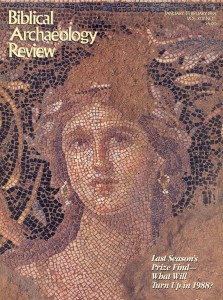The Mt. Ebal Site
Sidebar to: Two Early Israelite Cult Sites Now Questioned

Mt. Ebal, the highest mountain (over 3,000 feet) in northern Samaria, the mountain where the curses were pronounced (Deuteronomy 27–28) and the mountain where Joshua raised his altar (Joshua 8:30–35), now figures in a bitter dispute. Long hidden under a stone heap on a northeastern ridge of Mt. Ebal, a controversial stone structure may be the remains of an independent altar—the principal structure of a bamah, or “high place”—or of a farmhouse/watchtower, according to differing interpretations of the evidence. Discovered by Haifa University’s Adam Zertal during a 1980 archaeological survey of the mountain, the site has many potsherds dating from the early part of Iron Age I (1200–1000 B.C.), the period generally accepted as the date of Israel’s settlement of Canaan.
Already a library member? Log in here.
Institution user? Log in with your IP address.

